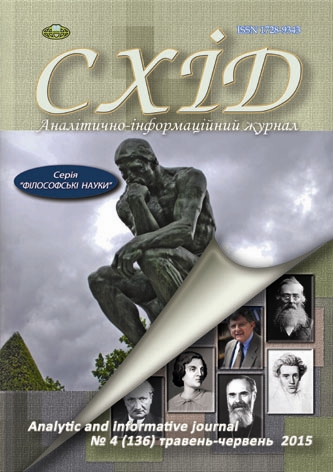Linguistic and culturological analysis of religious texts
DOI:
https://doi.org/10.21847/1728-9343.2015.4(136).48350Keywords:
linguistic and culturological method, religious text, symbol, hermeneutics, inner formAbstract
The paper explores the religious and cultural inner form of such notions as 'sacred-holy site', 'altar-fires of sacrifice', 'semiotics-semantics-sign' with the help of the linguistic and culturological method, using the classic languages material and ancient tradition of ceremonial and cult practices.
It is proved that objects in cultural or religious texts can converge by minor properties; their symbolic interchangeability, distinct associative pallet, referential remoteness, relatedness to different referential systems or space-time discontinuity often contravene unambiguous comprehension of the text, result in polyphony and hence multiple interpretations. It is noted that the linguistic and culturological method of analyzing religious and cultural texts has a weighty potential in religious studies and theological research.
Downloads
References
Bakhtin M. M. (1994), Works 1920, Next, Kyiv, 384 p. (rus).
Boldyrev N. N. (2000), Cognitive semantics: a course of lectures in English philology, Publisher Tambov University, Tambov, 123 p. (rus).
Borbotko V. H. (2009), Principles of formation of discourse: from psycholinguistics to linguistic synergy, LYBROKOM, Moscow, 288 p. (rus).
Adamchyk V. V. [editor] (2004), World Encyclopedia. Christianity, Sovremennyi literator, Minsk, 832 p. (rus).
Gadamer Hans-Georg (1991), The urgency of the beautiful, Iskusstvo, Moscow, 367 p. (rus).
Holianych M. (2007), The internal form of speech and discourse, Publisher Carpathian National University Vasyl Stefanik, Ivano-Frankivsk, 296 p. (ukr).
Nad G. (2002), Greek Mythology and Poetics, Prohress-Tradytsyya, Moscow, 432 p. (rus).
Potebnia A. A. (1905), From the notes of the Theory of Literature: Poetry and Prose. Paths and shapes. Thinking poetic and mythical. Annexes, Kharkov, 652 p. (rus).
Page Grau Natalie (2008), Introduction to the theory of intertextuality (translated), LKI Publisher, Moscow, 240 p. (rus).
Rusty F. (2001), Interprets the semantics (translated), Dekom, Nizhny Novgorod, 368 p. (rus).
Scriptures of the Old and New Testaments (1991), United Bible Societies, 1494 p. (ukr).
Hall E. T. (2003), Kontekst i znaczenie, in: Antropologia sіowa: zagadnienia i wybуr tekstуw, Wydawnictwo Uniwersytetu Warszawskiego, Warszawa, p. 128-135 (pol).
Mickiewicz F. SAC, ks. (1998), Znaki Ducha Њwiкtego, Apostolicum, Ząbki, 96 p. (pol).
Downloads
Published
How to Cite
Issue
Section
License
Copyright (c) 2015 Ivan Ostashchuk

This work is licensed under a Creative Commons Attribution-NonCommercial-NoDerivatives 4.0 International License.
1. Authors bear responsibility for the accuracy of facts, quotations, numbers and names used.
2. Manuscripts are not sent back.
3. The publisher does not always agree with the authors' opinion.
4. The authors reserve the right to authorship of the work and pass the first publication right of this work to the journal under the terms of a Creative Commons Attribution-NonCommercial-NoDerivatives 4.0 International License. This license allows others to distribute (copy) the published work for non-commercial purposes, provided there is mandatory attribution to its authors and a link to the first publication in our journal.
5. The authors have the right to conclude separate supplement agreements that relate to non-exclusive work distribution in the form in which it has been published by the journal (for example, to upload the work to the online storage of the journal or publish it as part of a monograph), provided that the reference to the first publication of the work in this journal is included.

